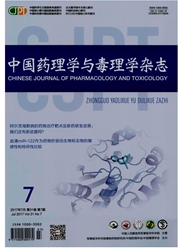

 中文摘要:
中文摘要:
目的构建毒死蜱(CPF)同时ig和sc暴露的以生理学为基础的毒物代谢动力学和毒效学(PBTK/TD)模型,模拟和验证其预测CPF暴露后体内毒代特征及毒效可靠性。方法①构建CPF的PBTK/TD模型,运用所构建的模型模拟大鼠同时ig和sc暴露CPF的毒代和毒效学数据,预测暴露大鼠血液中CPF及其代谢物3,5,6-三氯-2-吡啶酚(TCP)浓度变化,血液和大脑中乙酰胆碱酯酶(AChE)活性变化曲线。②45只成年雄性大鼠一次性ig和sc联合染毒CPF(50+50)mg·kg~(-1),染毒后0.0,1.0,2.0,4.0,6.0,8.0,12.0,24.0和48.0 h收集生物样本,测定血浆CPF和TCP浓度,及血浆和大脑皮质AChE活性,将实测值与模型模拟值进行比较,以验证模型的准确性。结果模拟大鼠ig和sc联合暴露CPF 20+20,10+30和(30+10)mg·kg~(-1)后,48 h内血液中CPF和TCP浓度均先上升,达到峰值后随之下降;ig暴露剂量越大,血浆AChE活性下降越快,酶活性抑制程度越重,但酶活性恢复速度很快;大脑AChE活性抑制程度受皮下暴露量的影响较大。实测大鼠联合染毒(50+50)mg·kg~(-1)CPF后的血浆CPF和TCP浓度,及血浆和大脑皮质AChE活性,与模型预测值基本一致,差异无统计学意义。结论本研究所构建的PBTK/TD模型可预测大鼠同时ig和sc暴露CPF后的体内毒代特征及毒效水平。
 英文摘要:
英文摘要:
OBJECTIVE To develop and validate a physiologically based toxicokinetics and toxicodynamics(PBTK/TD) model for chlorpyrifos(CPF) in rats following both oral and subcutaneous exposures to CPF.METHODS ① A PBTK/TD model was established with toxicokinetics and toxicodynamics data in literature,which was used for predicting contents of CPF and 3,5,6-trichloro-2-pyridinol(TCP) in blood and activities of acetylcholine esterase(AChE) in the plasma and brain of rats exposed to CPF.② Rats were given 50 mg·kg~(-1) CPF oral and 50 mg·kg~(-1) CPF sc simultaneously.Blood and brain samples were collected at 0,1,2,4,6,8,12,24 and 48 h,respectively,after CPF administration(n=5).CPF And TCP contents in plasma,activities of AChE in the plasma and brain were determined,and compared with the simulation values by PBTK/TD model in order to validate the accuracy of the model.RESULTS It was predicted by the PBTK/TD model that after the administration(oral+sc) of CPF 20+20,10+30 and(30+10) mg·kg~(-1),the concentrations of CPF and TCP in plasma increased and then decreased with time in each group.The inhibitory level of AChE activity in the plasma was orally dose-dependent,while AChE activity of the brain was more sensitive to CPF subcutaneous exposure.The simulation values obtained by the PBTK/TD model were not significantly different from the experimental values obtained by co-administered CPF at(50+50)mg·kg~(-1).CONCLUSION This CPF PBTK/TD model can quantitatively estimate target tissue dosimetry and AChE inhibition.
 同期刊论文项目
同期刊论文项目
 同项目期刊论文
同项目期刊论文
 期刊信息
期刊信息
